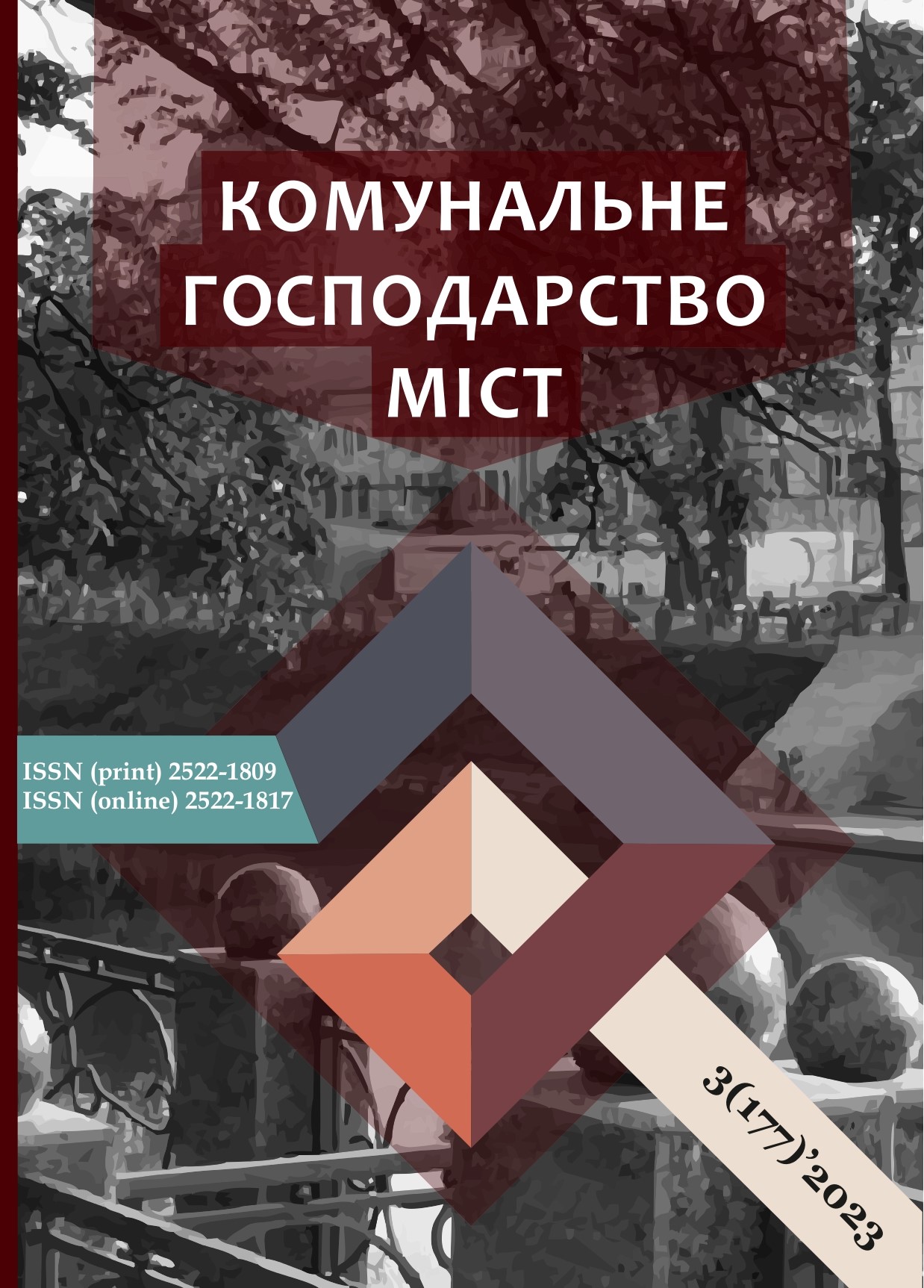AVOIDANCE OF OCCUPATIONAL RISKS OF WORKERS AND MAN-MADE EMERGENCY SITUATIONS DURING CLEANING OF METALLURGICAL EMISSIONS
DOI:
https://doi.org/10.33042/2522-1809-2023-3-177-166-170Keywords:
industrial gases, desulfurization, labor hygiene, risks, occupational diseases, environmental safetyAbstract
The article highlights the problem of increasing the level of flue gas filtration at industrial enterprises using the example of the metallurgical industry with the determination of technologically possible ways to increase the level of sulfur removal from gaseous emissions into the atmosphere. This can prevent occupational risks for employees of enterprises due to the reduction of the harmful effects of the components of industrial emissions on occupational health. Increasing the level of understanding of the impact of technological parameters on the target result opens up opportunities for organizing a more balanced and stable flue gas cleaning process. This, in turn, increases the ability of factories to comply with sanitary standards and prevent emergencies of a man-made nature when the maximum permissible concentrations of harmful components in gaseous emissions are exceeded. Solving this problem is possible when using mathematical modeling based on determining the relationship between the level of sulfur removal and the technological indicators of the desulfurization process. Regression analysis was used as a method for building a mathematical model. At the same time, the construction of a multifactorial mathematical model was carried out, based on the industrial parameters of the production of the metallurgical enterprise. The visualization of the obtained results is carried out by presenting the constructed mathematical model as three-dimensional graphs in the form of surfaces with the involvement of some of the technological indicators. The obtained results make it possible to optimize the production indicators to increase the efficiency of the desulfurization of gaseous emissions of the industrial enterprise. At the same time, additional aspects of the relationship between filtration indicators and the degree of purification from harmful components in flue gases are revealed, which allows to establish the most favorable process conditions and can be used not only in the metallurgical industry, but also in the thermal power industry.
References
Milotić, M., Đurić, S., Čepić, Z., Adamović, D., Obrovski, B., Đorđić, D., Stošić, M. (2022). Experimental Investigation of SO2 Removal from Flue Gases by Cleaning with Solution of Lime Suspension and Formic Acid. Processes, 10(3), 537. https://doi.org/10.3390/pr10030537
Ma, L., Duan, X., Wu, J., Li, J., Peng, L., Wang, L., Xiao, L. (2022). Simultaneous desulfurization and denitrification of flue gas enabled by hydrojet cyclone. Journal of Cleaner Production, 337, 1, 134205. https://doi.org/10.1016/j.jclepro.2022.134205
Shi, F., Li, K., Li., J., Ying, D., Jia, J., Sun, T., Yan, N., Zhang, X. (2021). Simultaneous wet absorption of SO2 and NOX with mixed Na2SO3 and (NH4)2SO3: Effects of mass concentration ratio and pH. Chemical Engineering Journal, 421, 1, 129945. https://doi.org/10.1016/j.cej.2021.129945
Kim, J., Lee, J., Cho, H., Ahn, Y. (2021). Life-cycle assessment of SO2 removal from flue gas using carbonate melt. Journal of Industrial and Engineering Chemistry, 100, 270-279. https://doi.org/10.1016/j.jiec.2021.05.013
Xie, B., Geng, N., Yu Q., He, D., Wang F., Liu, T., Gao, J., Ning, P., Song, X., Jia, L. (2022). Removal of SO2 from flue gas using blast furnace dust as an adsorbent. Environmental Science and Pollution Research, 29, 15642–15653. https://doi.org/10.1007/s11356-021-16842-7
Wang, S., Xu, S., Gao, S., Xiao, P., Jiang, M., Zhao, H., Huang, B., Liu, L., Niu, H., Wang, J., Guo, D. (2021). Simultaneous removal of SO2 and NOx from flue gas by low-temperature adsorption over activated carbon. Scientific Reports, 11, 11003. https://doi.org/10.1038/s41598-021-90532-9
Jia, L., Hu, K., Jiang, E., Feng, J., Song, X., Ning, P., Yu, Q., Wang, H. (2023). A new strategy for the reuse of typical hazardous solid waste electric arc furnace dust (EAFD): Efficient desulfurization by EAFD slurry. Separation and Purification Technology, 308, 1, 122980. https://doi.org/10.1016/j.seppur.2022.122980
Yang, X., Xie, B., Wang, F., Ning, P., Li, K., Jia, L., Feng, J., Xia, F. (2023). Resource utilization of hazardous solid waste blast furnace dust: Efficient wet desulfurization and metal recovery. Chemosphere, 314, 137592. https://doi.org/10.1016/j.seppur.2022.122980
Liu, P., Wu, X., Li, H., Bo, Y., Wei, N. (2023). Simulation analysis of gas–solid flow characteristics and water evaporation in flue gas semi-dry desulphurization process based on CPFD method. The Canadian Journal of Chemical Engineering. https://doi.org/10.1002/cjce.24888
Muhammad Adli Hanif, Naimah Ibrahim, Aishah Abdul Jalil. (2020). Sulfur dioxide removal: An overview of regenerative flue gas desulfurization and factors affecting desulfurization capacity and sorbent regeneration. Environmental Science and Pollution Research, 27, 27515–27540. https://doi.org/10.1007/s11356-020-09191-4
Downloads
Published
How to Cite
Issue
Section
License
The authors who publish in this collection agree with the following terms:
• The authors reserve the right to authorship of their work and give the magazine the right to first publish this work under the terms of license CC BY-NC-ND 4.0 (with the Designation of Authorship - Non-Commercial - Without Derivatives 4.0 International), which allows others to freely distribute the published work with a mandatory reference to the authors of the original work and the first publication of the work in this magazine.
• Authors have the right to make independent extra-exclusive work agreements in the form in which they were published by this magazine (for example, posting work in an electronic repository of an institution or publishing as part of a monograph), provided that the link to the first publication of the work in this journal is maintained. .
• Journal policy allows and encourages the publication of manuscripts on the Internet (for example, in institutions' repositories or on personal websites), both before the publication of this manuscript and during its editorial work, as it contributes to the emergence of productive scientific discussion and positively affects the efficiency and dynamics of the citation of the published work (see The Effect of Open Access).

